Advent tells us a great deal about the beautiful circumstances surrounding the birth of Jesus, but we don’t get all the information we would like. Wouldn’t we love, for example, to have just a sentence of scripture or even a tiny vignette from Jesus telling us what He thought about His human father Joseph? Unfortunately, the biblical record about Christ’s guardian is almost completely silent – like Joseph himself.
We have virtually no information about His relationship with Our Lady either. His esteem and love for His holy mother are without question, but there is no direct testimony of Jesus about His love for His mother, her qualities, her goodness, her personality, her beauty. Nothing.
So, given Jesus’ reticence about even His closest relatives, it is surprising to find Him expressing His open admiration for numerous people in scripture, a couple of whom were not even Jewish.
The Gospel says He was amazed, for example, at the faith of the Roman centurion who asked Jesus to cure his servant by a word of command (Luke 7:18). The Syrophoenician woman who begged Him to cast out a demon from her daughter was another (Matthew 15:21-28). He ends this encounter by exclaiming, “O woman, great is your faith!” And numerous others.
The Man He Most Admired
No other words of His, however, rival what He said about the one man He clearly admired the most: John the Baptist.
I tell you, among those born of women none is greater than John. (Lk 7:28)
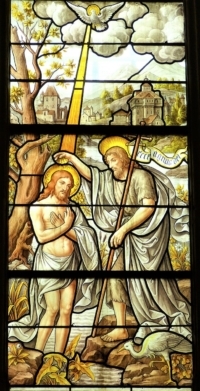 That is high praise indeed from the Incarnate Son of God Himself. In one sentence Jesus puts the Baptist before His parents, before His ancestor King David, and before all the holy men, women, and Prophets of Israel. “None is greater!” It’s hard to beat that.
That is high praise indeed from the Incarnate Son of God Himself. In one sentence Jesus puts the Baptist before His parents, before His ancestor King David, and before all the holy men, women, and Prophets of Israel. “None is greater!” It’s hard to beat that.
Why did He give John what amounts to the greatest compliment in history? Why such open admiration?
It is because, in John, Jesus found everything that God hoped to see in Israel. John was the full expression of fidelity to the covenant that the people should have expressed in anticipation of their Messiah:
- John was the son of an Old Testament priest, Zechariah, which means that John himself was a priest of Israel;
- John lived an ascetical life, preached repentance, and even dressed like Elijah (2 Kgs 1:8), which means he was a prophet, and indeed the culmination of all of Israel’s prophets;
- John’s mother, Elizabeth, was related to the Virgin Mary, so he was probably of the same family line that descended from the kings of Israel (Mary’s genealogy is found in Lk 3:23-38), which means John had kingly blood in him too.
In other words, John was priest, prophet, and king, the complete expression of all the institutions and aspirations of Israel. He prepared God’s holy people to meet their Messiah and pointed Him out when He came:
A man named John was sent from God,
He came for testimony, to testify to the light, so that all might believe through him.
He was not the light, but came to testify to the light.
The true light, which enlightens everyone, was coming into the world. (Jn 1:6-9)
Precursor in Birth and Death
To use our familiar analogy, John was a sort of sacred window opening to eternity and in turn letting the divine light shine into the world. In his ministry, he was literally a spotlight focusing on the one Person immersed in the dark panorama of human history whom everyone needed to see. His strict association with Jesus, both in birth and in death, is something no other person in history can claim, except perhaps the Virgin Mary.
We know the story of the Visitation (Lk 1:39-45), and it’s amazing to think that even as an unborn child, John had an acute awareness of the Presence of God. He literally “testified to the light”, in utero. We also know the story of John’s beheading (Mt 14:1-12) which made John’s identification with the suffering Messiah complete.
Regarding the historical John, we can only guess where the Visitation might have taken place, but we know the exact place where he was beheaded. If you’re like me, you probably didn’t even know the actual place still existed – well, sort of. Let’s take a brief look at it to deepen our awareness of this towering man of faith who is a central feature of our Advent journey.
The Fortress
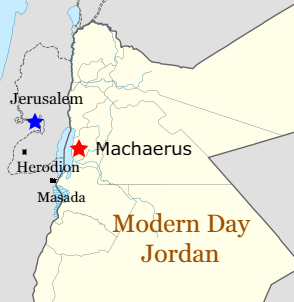 The first-century historian Flavius Josephus tell us that in about 32 AD John the Baptist was imprisoned in the fortress called Machaerus (pron. ma-kay-rus) that Herod the Great had built sixty years before. I should say that Herod had rebuilt an old Jewish fortress after it had been destroyed by the Romans in 57 BC.
The first-century historian Flavius Josephus tell us that in about 32 AD John the Baptist was imprisoned in the fortress called Machaerus (pron. ma-kay-rus) that Herod the Great had built sixty years before. I should say that Herod had rebuilt an old Jewish fortress after it had been destroyed by the Romans in 57 BC.
(If the Romans were pretty good at building things, they were even better at destroying them. It was not the first time they destroyed this fortress, as we shall see.)
Machaerus was situated on a huge rock on the eastern side of the Dead Sea, about 16 miles southeast of Jerusalem. It was a strategic defense position for the early Jewish kingdom of the Maccabean dynasty. Herod saw its military value and built his own fortress atop the ruins the Romans had left. In fact, it was one of a series of fortresses he built (Herodion and Masada among others, see map), from which he jealously guarded his kingdom.
On a clear day you can actually see the other two fortresses along with Jerusalem and Bethlehem from the mountaintop of Machaerus.
The Wretched Herodian Line
But it wasn’t this Herod (the Great) who killed John the Baptist. Herod the Great was the one who received the Magi and then sought to kill the Child Jesus. We have the sad story of the Massacre of the Innocents (Mt 2:13-18) to sense the full measure of this man’s evil.
It was his son, Herod Antipas, who was the persecutor and murderer of John the Baptist. Like father, like son, they say.
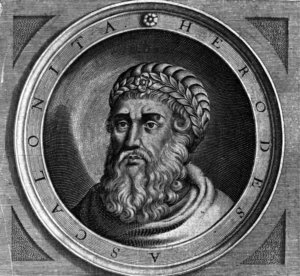
Herod the Great
Antipas ruled over Judea after his father died in 4 BC, and if the story of John the Baptist says anything about him, it indicates that he was a foolish, impetuous, and tyrannical ruler. He was the very same Herod to whom Pilate sent Jesus on Good Friday (Lk 23:6-12). He must have been so far gone (spiritually) that Jesus did not even speak a single word to him. A truly chilling encounter if there ever was one.
Eventually, Antipas became so obnoxious even to the Romans that they deposed him in 39 AD and sent him into exile.
Then his brother Herod Agrippa ruled in his place. We know that St. Paul appeared and testified before King Agrippa (in Acts 26), who was not converted even by a persuasive preacher like St. Paul. Maybe he wasn’t as bad as his brother and dad, but he was a Herod after all.
Hmm, let’s see: Herod the Great was not converted by the Magi. H. Antipas was not converted by the Baptist or by his encounter with Jesus. H. Agrippa was not converted by St. Paul. Apparently, obstinacy was a family trait.
Be that as it may, at least they built nice palaces – that is, before the Romans destroyed them.
When H. Agrippa died in 44 AD, Machaerus remained under Roman control until 66 AD when the soldiers of the First Jewish Revolt took it over, which prompted the Romans – again – to come and tear it down a second time. That happened in 72 AD, two years after they had torn down the Temple and utterly obliterated the entire city of Jerusalem. Roman efficiency at its worst.
Jesus’ frightening prophecy had come true with a vengeance: “This generation [will] be charged with the blood of all the prophets shed since the foundation of the world” (Lk 11:50). That included the blood of John the Baptist, the greatest of all the prophets. Machaerus, his place of death, was never rebuilt after that.
This is what it might have looked like when the Herods ruled:
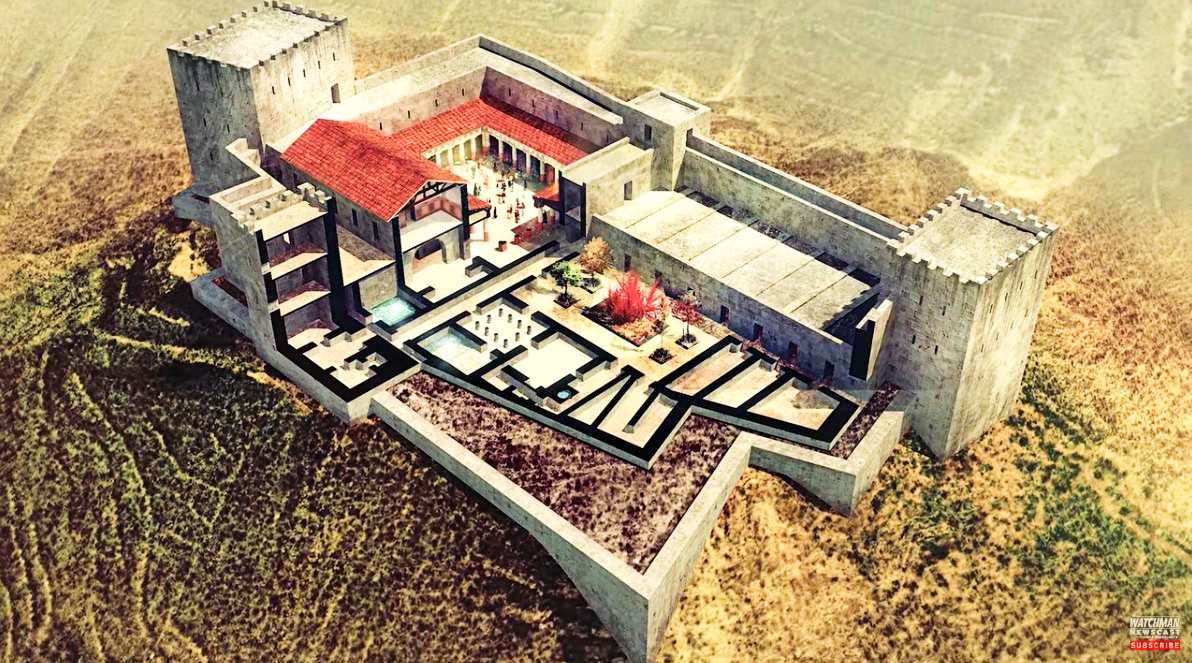
This is what it looks like today:
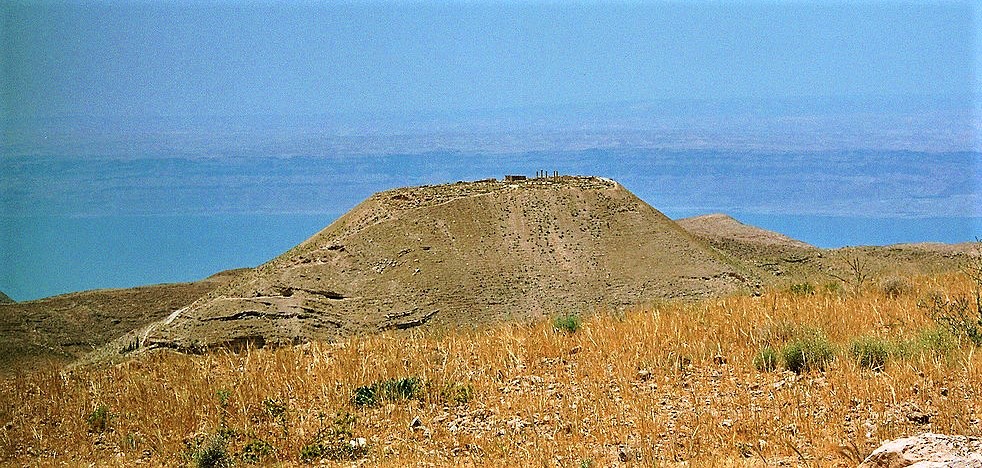
It’s hard to fathom the size of the rock from this picture, but it spans about half a mile at its base and is protected on three sides by steep ravines, which made it virtually an impregnable fortress (except against the Romans, of course.)
Machaerus lay dormant, not even recognized as the palace of Herod, for over 1700 years until it was rediscovered by a Danish archeologist in 1807. Even then, it took another 170 years before it was fully excavated by the Franciscans in the 1970s.
Today, despite some reconstruction of ancient structures, it’s not much more than a huge rock in the middle of the desert, but that rock is a testimony to a Prophet, who is still crying out in the wilderness: “Prepare the way of the Lord!”
Fascinating Images
There is a half-hour documentary on Machaerus on YouTube, which is well worth watching, but for your more immediate pleasure I’ve added some photos below which represent the current state of the excavations. Below that, make sure to watch a three-minute clip from the 1977 movie Jesus of Nazareth that shows John dressing down Herod (Hint: beginning at the 2:00 mark, John addresses the king, played by Christopher Plummer, when Herod and Herodias are entering the palace of Machaerus.)
It shows exactly why John the Baptist was the man Jesus most admired! The scene is simply awesome.
Possible sites of the prison and place of John the Baptist’s beheading.
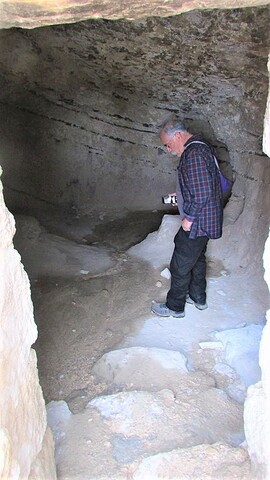
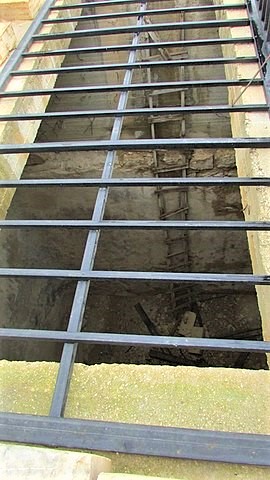
John the Baptist Clip from Franco Zeffirelli’s Jesus of Nazareth (1977)
———-
[Note: This article is a reproduction of the Sacred Windows Email Newsletter of 12/04/22, so it does not end with the regular Soul Work section. Please visit our Newsletter Archives.]
Image Credit: Erick Stakelbeck (The Watchman Episode 103: Inside Ancient Fortress where John the Baptist was Executed)
Photo Credits: Carole Raddato; יעקב; hikinginjordan via Wikimedia Commons, CC BY-SA 2.0, 3.0, 4.0.

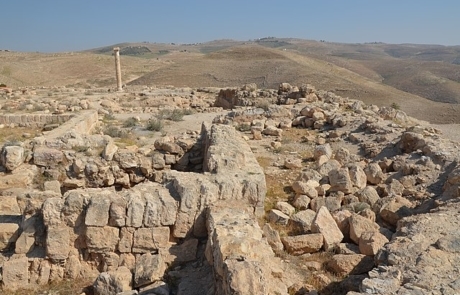
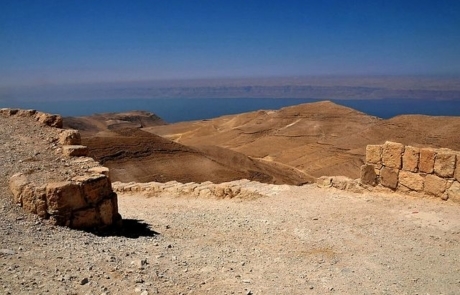
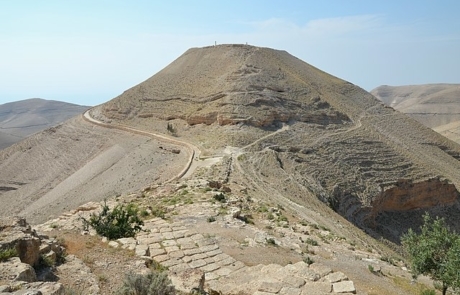
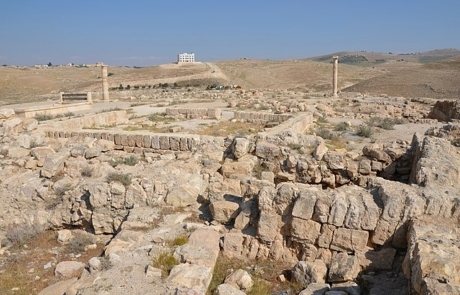
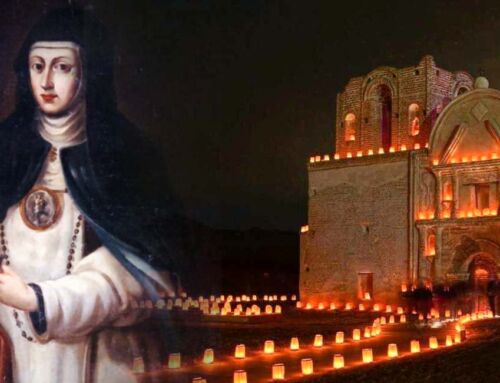

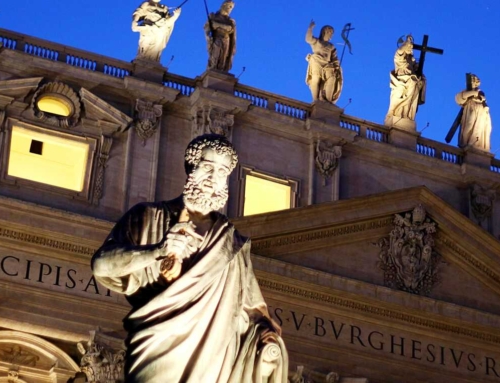
Leave A Comment